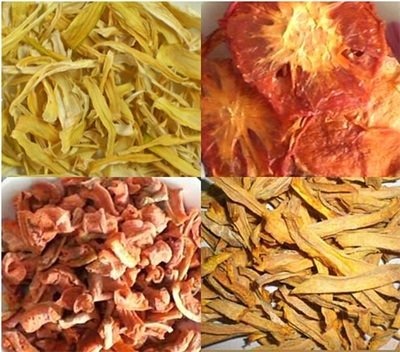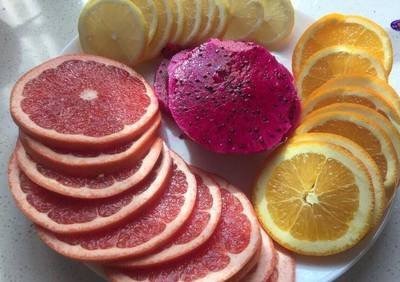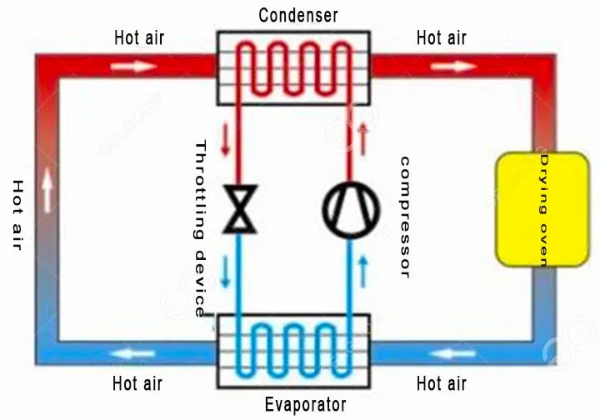
Content Menu
● Introduction
● Understanding Food Drying
● Types of Food Dryers
● How Heat Pump Dryers Work
● Applications of Food Drying
● Advantages of Food Drying
● Challenges in Food Drying
● Future of Food Drying Technology
● Conclusion
● FAQs
>> 1. What foods can be dried using a heat pump dryer?
>> 2. How does food drying affect nutritional value?
>> 3. What are the best practices for drying food at home?
>> 4. Can I use a heat pump dryer for commercial food drying?
>> 5. What are the energy savings associated with heat pump dryers?
Introduction
Food preservation is a critical aspect of food management, ensuring that we can enjoy seasonal produce year-round. Among various preservation methods, food drying stands out for its simplicity and effectiveness. This article explores the intricacies of food drying, focusing on heat pump dryers, their technology, applications, and benefits.

Understanding Food Drying
Food drying is the process of removing moisture from food to inhibit the growth of bacteria, yeasts, and molds. Historically, drying has been used for centuries, with methods ranging from sun drying to smoking. Today, modern technology has revolutionized this age-old practice, making it more efficient and accessible.
Types of Food Dryers
Food dryers come in various forms, including traditional dehydrators, convection ovens, and heat pump dryers. Heat pump dryers utilize a unique technology that recycles warm air, making them energy-efficient and effective for drying a wide range of foods. Unlike conventional methods, heat pump dryers do not require external venting, allowing for versatile placement in kitchens or production facilities.
How Heat Pump Dryers Work
Heat pump dryers operate by circulating warm air through the food, extracting moisture in the process. The warm air is cooled, causing moisture to condense and be collected, while the dry air is reheated and recirculated. This closed-loop system not only conserves energy but also maintains a consistent drying temperature, which is crucial for preserving the quality of the food.
Applications of Food Drying
Food drying has applications in both home kitchens and industrial settings. Home users often dry fruits, vegetables, and herbs for personal consumption, while commercial operations may focus on producing dried fruits, jerky, and snacks. The versatility of heat pump dryers makes them suitable for various food types, enhancing their appeal to both consumers and manufacturers.

Advantages of Food Drying
The benefits of food drying are manifold. Nutritionally, dried foods retain most of their vitamins and minerals, making them a healthy snack option. Economically, drying extends the shelf life of food, reducing waste and saving money in the long run. Additionally, dried foods are lightweight and easy to store, making them ideal for camping and travel.
Challenges in Food Drying
Despite its advantages, food drying does come with challenges. Common issues include uneven drying, which can lead to spoilage, and the need for precise temperature control to prevent nutrient loss. However, with the right equipment and techniques, these challenges can be effectively managed.
Future of Food Drying Technology
The future of food drying technology looks promising, with innovations aimed at improving efficiency and sustainability. Advances in heat pump technology and automation are making food drying more accessible and environmentally friendly. As consumers become more health-conscious, the demand for dried foods is expected to rise, driving further innovation in this field.
Conclusion
Food drying is an essential method of food preservation that offers numerous benefits, from extending shelf life to maintaining nutritional value. Heat pump dryers represent a significant advancement in drying technology, providing an efficient and effective solution for both home and industrial applications. As we move forward, embracing these technologies will be crucial in meeting the growing demand for healthy, preserved foods.

FAQs
1. What foods can be dried using a heat pump dryer?
Heat pump dryers can effectively dry a variety of foods, including fruits, vegetables, herbs, and meats.
2. How does food drying affect nutritional value?
Food drying generally preserves most of the nutrients, although some vitamins may be sensitive to heat and light.
3. What are the best practices for drying food at home?
Ensure even slicing of food, maintain consistent temperatures, and store dried foods in airtight containers to maximize shelf life.
4. Can I use a heat pump dryer for commercial food drying?
Yes, heat pump dryers are suitable for commercial applications, providing efficient drying for large batches of food.
5. What are the energy savings associated with heat pump dryers?
Heat pump dryers can save up to 50% more energy compared to traditional dryers, making them a cost-effective choice for drying food.












